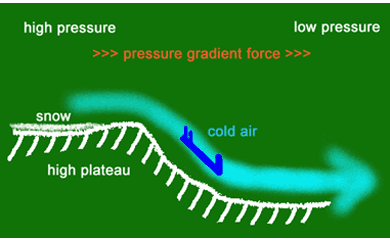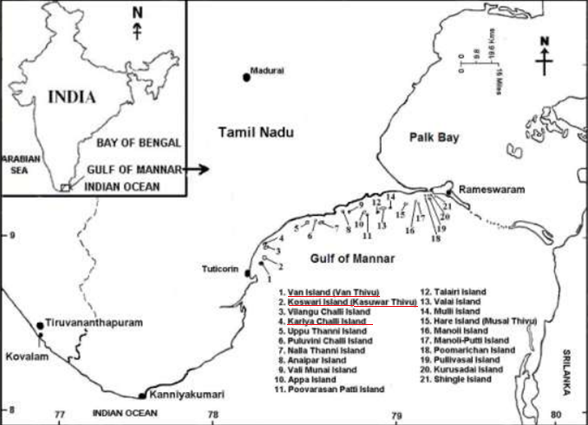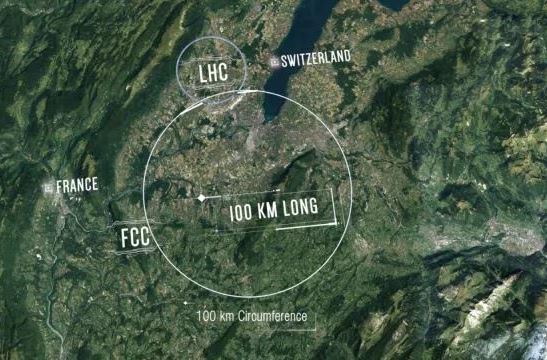The Law of Criminal Defamation Report
The 22nd Law Commission of India has submitted its Report No. 285 titled “The Law of Criminal Defamation” to the Government of India.
The Law Commission of India, a non-statutory body constituted by the Government of India. It was originally constituted in 1955 and is re-constituted from time to time. 22nd Law Commission tenure is up to August 2024.
|
Criminal Defamation in India
|
- Defamation – It is the communication of a false statement that harms the reputation of an individual person, business, product, group, government, religion, or nation.
- It is dealt by Section 499 & 500 of Indian Penal Code (IPC), 1860.
- Section 499 - Defamation could be through words spoken or intended to be read, through signs about a person with the intention of damaging the reputation of that person.
- Section 500 – It stipulates imprisonment of up to 2 years, with or without a fine, for someone held guilty of criminal defamation.
|
- It was referred to the law panel by the law ministry in August, 2017.
- Report – It stresses upon both the constitutional importance of defamation laws and their potential misuse.
In Subramanian Swamy v. Union of India, 2016, SC had upheld the constitutional validity of Section 499 of IPC, on account of it being a reasonable restriction under Article 19(2) to the freedom of speech and expression enshrined in Article 19(1) (a) of Indian Constitution.
- Recommendation – Criminal defamation be retained within the scheme of criminal laws in the country.
- Balance the right to freedom of speech and the right to reputation through the application of criminal defamation laws.
- Right to freedom of speech and expression under Article 19(2) is subject to reasonable restrictions, like the right to reputation.
- Right to reputation is derived from Article 21 that guarantees the right to life and personal liberty and so it has to be protected.
Bharatiya Nyaya Sanhita, 2023 has introduced community service as an alternative punishment, which has shown the most balanced approach in protecting one’s reputation and speech too.
References
- PIB| Submission of Law Commission’s Report
- The Indian Express| Retaining Criminal Defamation
Katabatic Winds
According to new research, glaciers around the world's tallest mountains are actually getting slightly colder during the warm season due to intensification of katabatic winds.
- It is also called as mountain breeze as they move from a higher elevation of a mountain to a lower elevation.
- Origin – During and after sunset, air near the top of elevated land surfaces cools relatively quicker than air at lower altitudes.
- As air cools, it becomes denser and heavier, then flows down the side of the mountain, resulting in a katabatic winds.
The ascending heated air during day is called as anabatic winds.
- Over glacial mountains – If the slopes are covered with ice and snow, it will blow both at night and day.
- On warm days, air just above the glacier's surface warms and rises, creates a vacuum.
- Thus cold air around the snowy peaks rush down due to gravity, creating a downhill katabatic winds.

- Characteristics – It typically peak in the afternoon, reach speeds of over 100 mph.
- Examples – Foehn winds, Santa Ana and others
- Climate change impacts – As average global temperatures rise worldwide, more air warms and rises from the mountain's surface, forcing more cold air down as katabatic winds, thus causing the cooling trend over the last 15 years over the Himalayas.
- Impact on glacier melting – These chilly winds may have partly helped in slowing the melting of these glaciers which otherwise could have been even worse.
- However, glaciers will continue to melt with climate change because glacial melting is not just linked to air temperature close to the ice.
Pyramid International Observatory is located on the southern face of Mount Everest along the Khumbu Valley.
Reference
Business Insider| Influence of Katabatic Winds over Himalayas
Kariyachalli Island Restoration Project
T.N. pioneers a model for saving the sinking island of Kariyachalli in the Gulf of Mannar region.
- Kariyachalli Island – It is located in Gulf of Mannar region in Tamil Nadu, 4th island from the Thoothukudi side.
- Submergence – It used to be 16 hectares, but has shrunk to 5.97 hectares.
Studies have predicted that without intervention, Kariyachalli and Kasuwari Islands in Gulf of Mannar region will sink by 2035. Kasuwari Island is also proposed for restoration project.
- Kariyachalli Island Restoration Project – A part of the Tamil Nadu Coastal Restoration Mission which had successfully brought back life of previously submerged Vaan Island.
Vaan Island is one of the 21 islands located about 6 km off Thoothukudi. It is a low-lying island with small-scale sand dunes, mostly reef sediments and has fringing type of coral reefs around it.
- Tenure - 4 years from 2024-25 fiscal year.
- Budget – Rs.50 crore, with World Bank assistance.
Gulf of Mannar
- It is a set of 21 islands in total which includes estuaries, beaches and mudflats.
- Location – It dot the southern coast of Tamil Nadu, between the holy town of Rameswaram and the Pearl City Thoothukudi.
- Biodiversity – It is endowed with 3 distinct Coastal ecosystems namely coral reef, seagrass bed and mangroves.
- It is India’s 1st marine biosphere reserve.
- Threats – Corals are mined for building materials and chemical industries which removed the hard substrates, exposing the shores of the islands to direct assault of wave action, leading to erosion.
- So far, 2 islands have submerged, area of 15 of them has come down.

Jagdish S. Bakan, current Wildlife Warden of Gulf of Mannar Marine National Park has won the UNESCO Michel Batisse Award and the UNEP Asia Environmental Enforcement Award in 2023 for his work in the biosphere.
References
- The Hindu| Kariyachalli Island Restoration Project
- ENVIS| Gulf of Mannar
Future Circular Collider (FCC)
CERN is pushing its plan to build the Future Circular Collider, a particle accelerator that will dwarf the Large Hadron Collider.
- FCC – It is a particle accelerator that will be within a 91-kilometre ring of LHC.
- Features – It will be 3 times bigger (and faster).
- Budget – About 20 billion euros.
- Development - It has not yet been approved by the member states yet as the feasibility study is due to be handed in at the end of 2025.
- Even if it gets approved on time, it would only be operational by 2045 by the very earliest.
|
Large Hadron Collider
|
Future Circular Collider
|
|
A proton-proton machine.
|
An electron-positron collider.
|
|
1 stage machine
|
2 stage– Initially electron-positron, later to be proton-proton collider.
|

CERN
- It is a European Organization for Nuclear Research.
- Members – 23 member states.
- Finance – Member states pay into the budget in proportion to their GDP, with Germany, the United Kingdom, France, and Italy being the biggest contributors.
- It is home to Large Hadron Collider (LHC), largest machine in the world.
- LHC – A particle accelerator, hosted inside a 27km long tunnel.
- It accelerates protons and other subatomic particles to high speeds close to the speed of light and makes them collide with each other.
- It was instrumental in the discovery of the Higgs Boson, so-called god particle in 2012.
Indian scientists have been involved in the design of many components of the LHC and played a significant role in various experiments like ALICE and CMS.
References
- The Indian Express| Development of Future Circular Collider
- Cern| India at CERN
Water Purification System (Regulation of Use) Rules, 2023
Recently, Ministry of Environment Forest & Climate Change has published the Water Purification System (Regulation of Use) Rules, 2023.
- Rules – It seek to regulate waste generated from water purification systems.
- It outline guidelines for the proper management, storage, and utilization of reject water and discarded elements generated by these systems.
- Legality – Under the Environment Protection Act, 1986.
- It shall come into force in November 2024.
- Nodal agency for implementation
- In States – State Pollution Control Board
- In Union Territory – Pollution Control Committee
Key Features of Water Purification System (Regulation of Use) Rules, 2023
- Guidelines – The Central Pollution Control Board (CBCB) will issue guidelines for managing rejected water and discarded elements from water purification systems.
- Standard mark – A manufacturer of a domestic water purification system must obtain the standard mark and certification from the Indian Bureau of Standards.
- Label – It shall include details of manufacturers or importers, license number, and waste water generated.
- Obligations – The nodal agency will register manufacturers and importers of commercial water purification systems.
- New and existing users must obtain prior authorisation from the nodal agency within 6 months of the notification of the Rules.
- Responsibility – To collect, transport, dispose, and recycle waste including plastic waste, e-waste and hazardous wastes.
- Comply with Water Act – Water (Prevention and Control of Pollution) Act, 1974 includes responsibility to
- Obtain permission before setting up a plant.
- Report any new outlets for discharge of sewage
- Cooperate with CPCB for inspection.
References
- PIB| Regulating Water Purifiers
- PRS| Key features of Water Purification System Rules
|
Other Important Topics
|
|
EdCIL Vidyanjali Scholarship Programme
|
|
Union Minister of Education and Skill Development & Entrepreneurship launched EdCIL Vidyanjali scholarship program and fintech platform recently.
- It is a powerful force aimed at revolutionizing opportunities for quality education and access to higher education institutions.
- It is in alignment with the National Education Policy 2020.
|
|
Pradhan Mantri Formalisation of Micro Food Processing Enterprises (PMFME) Scheme
|
- The PMFME Scheme is a centrally sponsored scheme launched by the Ministry of Food Processing Industries in 2020.
- The scheme aims to provide financial, technical, and business support to upgrade existing micro food processing enterprises.
- The PMFME scheme provides a credit-linked capital subsidy of 35% of the eligible project cost (Rs. 10 crore) up to a maximum of Rs. 3 Crore.
- The beneficiary contribution should be a minimum of 10% and the balance should be a loan from a bank.
|
|
Umiam Wetland
|
|
As per the Asian Waterbird Census, 2024, there are over 155 water birds found at the wetland areas of Umiam Lake.
- Umiam Lake (Barapani Lake) is the largest artificial lake in Meghalaya.
- The name, Umiam, which means ‘water of tears’, derives from a local legend of 2 sisters who wished to descend from their abode in heaven.
- The lake was created when the Umiam River was dammed in the 1960s as part of the Umiam Umtru Hydro Electric Power project (1st hydel project in the state).
|
|
National Science Day
|
- The National Science Day (NSD) is celebrated every year on 28 February to commemorate the discovery of the ‘Raman Effect’.
- Government of India designated 28 February as National Science Day (NSD) in 1986.
- On this day Sir C.V. Raman announced the discovery of the 'Raman Effect' for which he was awarded the Nobel Prize in 1930.
- The day aims to promote science communication activities across the country, encouraging scientific inquiry and collaboration.
|
|
Canshala
|
|
T.N. Minister recently inaugurates satellite school, Canshala in Chennai for students battling cancer.
- Canshala is a special school for children battling cancer, ensures continuity of education and support during treatment.
- Canshala is a formal school for children with cancer in India. It was launched in 2012 at the Tata Memorial Hospital in Mumbai.
- It provides formal education and helps children make up for lost time while undergoing treatment.
- It is LGBTQ+ friendly, has a gender-neutral restroom, and a wheelchair accessible entrance.
|
|
Free visa for Indians by Iran
|
|
Iran has announced a visa-waiver programme for Indians visiting the country for tourism recently.
- As of February 2024, Indian tourists with ordinary passports can visit Iran for up to 15 days without a visa for tourism purposes.
- However, the relaxation does not apply to those traveling for other purposes, like work or study.
|
|
Herculaneum papyri or scrolls
|
- A team of student researchers is using artificial intelligence (AI) to reveal what is written inside a charred scroll that was buried under the eruption of Mont Vesuvius 2,000 years ago.
- It uses the same AI technology that could be used to decipher the rest of the “Herculaneum scrolls.”
- The Herculaneum papyri or scrolls are more than 1,800 papyrus scrolls that were discovered in the 18th century in Italy, were long thought to be unreadable.
- The Herculaneum scrolls as essentially lumps of carbonised ash but they are also the only library that survives from the ancient world.
|
|
PACE mission
|
|
NASA and SpaceX were scheduled to launch the PACE mission on February, 2024, but the launch was delayed due to unfavorable weather conditions.
- The Plankton, Aerosol, Cloud, ocean Ecosystem (PACE) mission is a NASA satellite mission that will study the ocean's carbon cycle, ecology, and biogeochemistry.
- Duration – 3-10 years (Planned).
- The mission will also measure atmospheric particles and clouds, and study phytoplankton.
- It will also help us understand the ocean carbon cycle and Earth's climate.
|
|
TARINA Programme
|
- Technical Assistance and Research for Indian Nutrition and Agriculture (TARINA) is a program launched in 2015 by the Tata Institute of Social Sciences (TCI).
- The program's goal is to promote a more nutrition-sensitive food system in India.
- TARINA aims to help marginalized women.
- TARINA's Center of Excellence in New Delhi supports nutrition-sensitive agriculture in India through evidence building.
|
|
Bharat Rice, Bharat Atta & Bharat Dal
|
|
Union Minister for Consumer Affairs launched the sale of Rice under ‘Bharat’ brand and flagged off 100 mobile vans here recently.
- Bharat Rice, Bharat Atta & Bharat Dal commodities will now be available at all
- Kendriya Bhandar,
- National Agricultural Cooperative Marketing Federation of India (NAFED) and
- National Cooperative Consumers' Federation of India (NCCF).
- Bharat Rice will be sold at maximum retail price (MRP) of Rs. 29/kg.
- Bharat Atta is being sold at Rs. 27.50 per Kg.
- Bharat Dal (chana dal) is also being sold at Rs.60 per kg along with onions at Rs.25 per kg.
|

